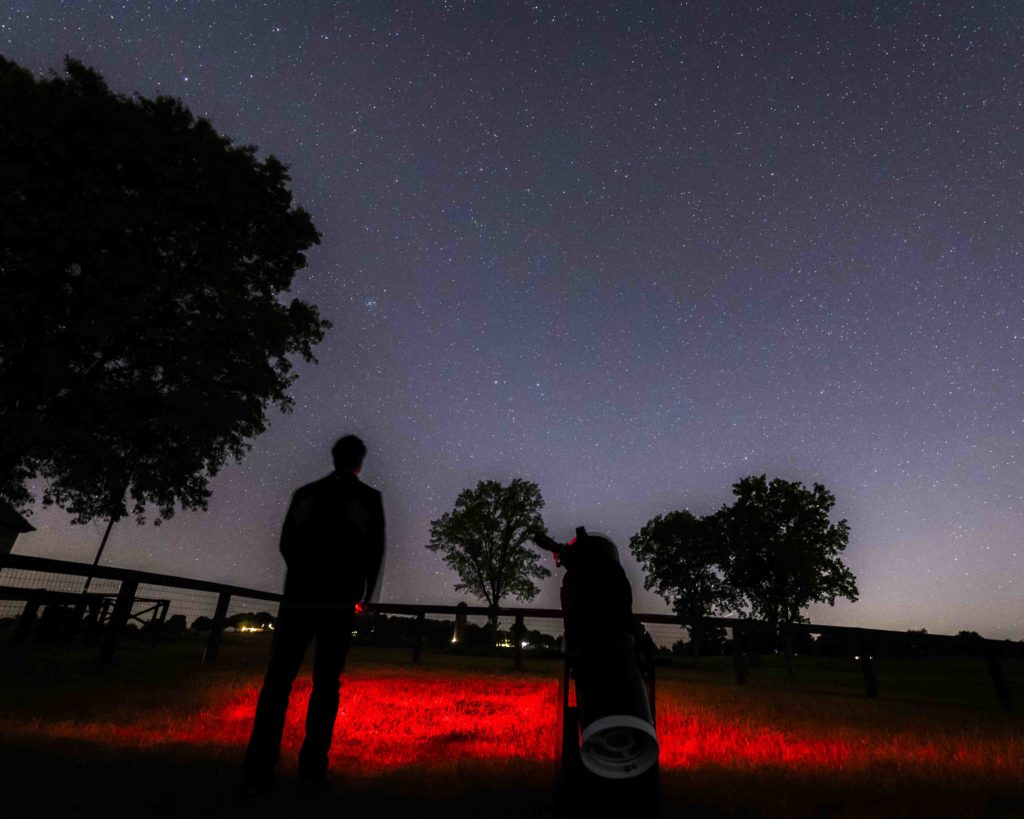
As April arrives, the brilliant constellations Taurus, Orion, and Canis Major turn to the west after sunset and are on their way out for the year. Mercury makes an appearance in the second half of the month in the evening sky and encounters the Pleiades as April winds down. The Lyrid meteors arrive, the first major meteor shower since January. And planets begin to congregate in the morning sky leading to a number of spectacularly close conjunctions for observers with or without optics. Here’s what to see in the night sky this month…
1 April 2022. New Moon, 6:24 UT
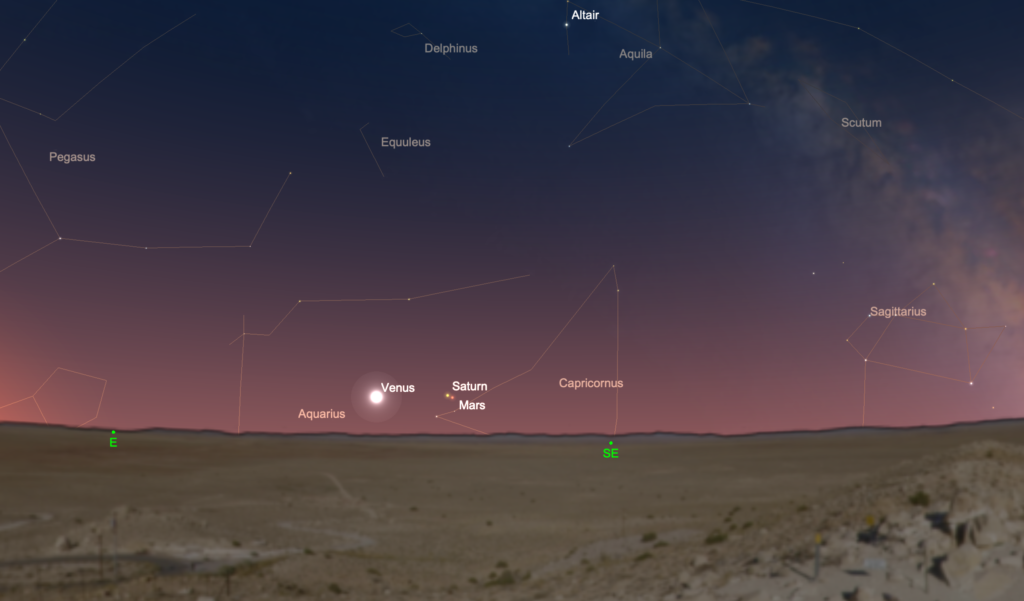
4 April. Look to the southeast before sunrise to see Mars and Saturn rising in the brightening sky. The two planets lie just half a degree from each other, while Venus lies about seven degrees to the east. Use Venus as a guide to spot the two fainter planets with the unaided eye. Both are easily visible in binoculars. A telescope at medium magnification also puts both planets in the same field of view. Venus and Mercury shine around first magnitude with Saturn just marginally brighter than Mars. In a telescope, Saturn’s disk appears about three times larger than Mars; the latter is still too distant to give up much detail in a scope. The red-orange hue of Mars presents an evident contrast with sand-yellow Saturn.
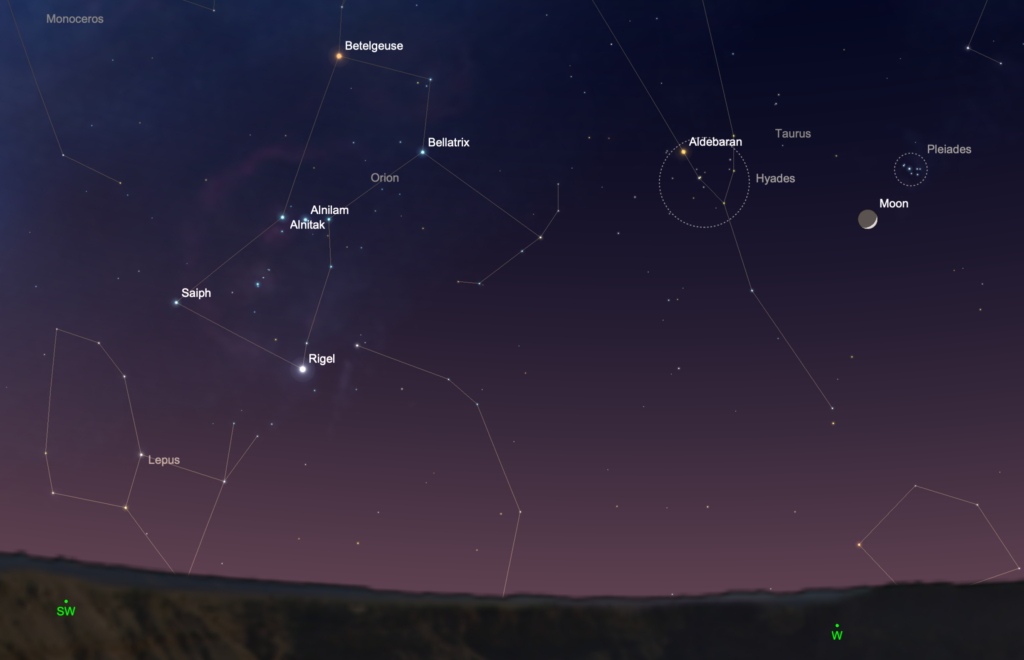
4 April. In the evening sky after sunset, look for a slender crescent Moon, just three days old, about four degrees from the Pleiades star cluster low in the southwestern sky. Both fit into a binocular field of view and present a truly splendid sight. The Hyades star cluster lies to the east of the Moon, with Orion further southeast still.
8 April. The nearly first-quarter Moon makes a triangle with the bright stars Castor and Pollux in Gemini.
9 April. First Quarter Moon, 6:48 UT
16 April. Full Moon, 18:55 UT
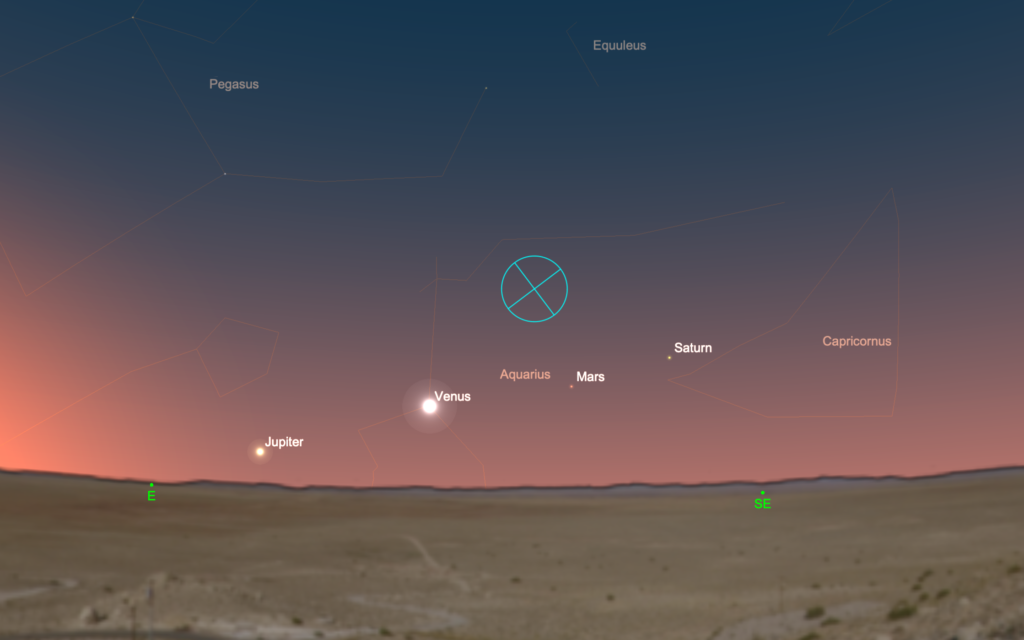
16 April. As the full Moon sets in the west before sunrise, turn eastward to see Jupiter join the planetary show in the eastern sky at dawn. Four planets are now visible here. From east to west you can see Jupiter, Venus (the brightest), Mars, and Saturn.
22 April. The Lyrid meteor shower peaks in the early-morning hours. This is the first significant meteor shower since the Quadrantids in early January. The Lyrids display some 15-20 meteors per hour in good conditions. The Moon, just a day before last quarter, may get in the way of the faintest meteors this year.
The Lyrids trace their apparent paths back to a point between the constellations Hercules and Lyra, both of which rise in the east around midnight. They’re visible all night, but you may have more luck after midnight as the Earth turns into the meteor stream. The Lyrids have made a regular appearance for at least 2,500 years, longer than any other meteor shower. They happen as Earth passes through a stream of debris left by Comet C/1861 G1 (Thatcher).
23 April. Last Quarter Moon, 11:56 UT
27 April. At 19:00 Universal Time, Neptune lies just 1/100 of a degree north of Venus in the eastern sky before sunrise. The two planets lie in a rapidly brightening sky and differ in brightness by 12 magnitudes (about 63,000 x). A telescope is a must for this exceedingly difficult observation – it would be interesting to know how many around the world see this extraordinary sight.
29 April. Mercury reaches greatest eastern elongation 21o from the Sun. It appears relatively prominently in the evening sky.
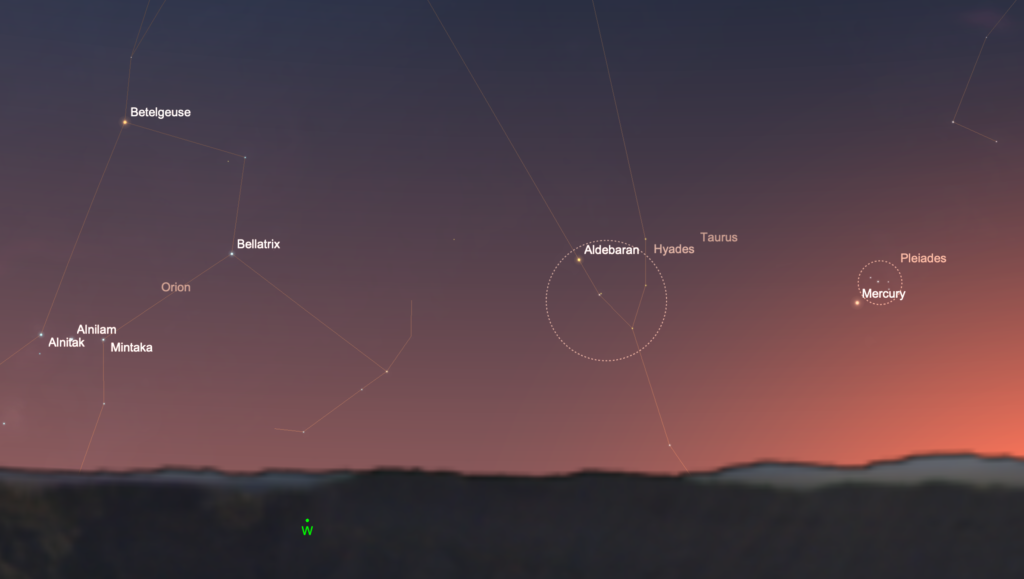
29 April. To coincide with its greatest elongation today, Mercury lies passes about 1.4o south of the Pleiades star cluster. Look for this sight just above the west-northwestern horizon after sunset. At magnitude +0.4, Mercury shines brighter than all the stars of the Pleiades and the adjacent Hyades star cluster which lies about ten degrees to its left. Binoculars improve the view and show the contrast in color between creamy Mercury and the young blue-white stars of the Pleiades. In a telescope, the planet’s tiny disk appears about 35% illuminated and spans just eight arc-seconds.

30 April. Jupiter continues to rise in the early morning sky and today, brilliant Venus passes less than 0.25o degree south of Jupiter in the eastern sky before sunrise. This striking conjunction is easily visible to the unaided eye and in binoculars, and is even more spectacular in a telescope. At magnitude -4.1, the disk of Venus is about 65% illuminated and spans about 16 arc-seconds. At magnitude -2.1, Jupiter’s disk spans 35 arc-seconds and reveals some cloud detail and its bright Galilean moons.